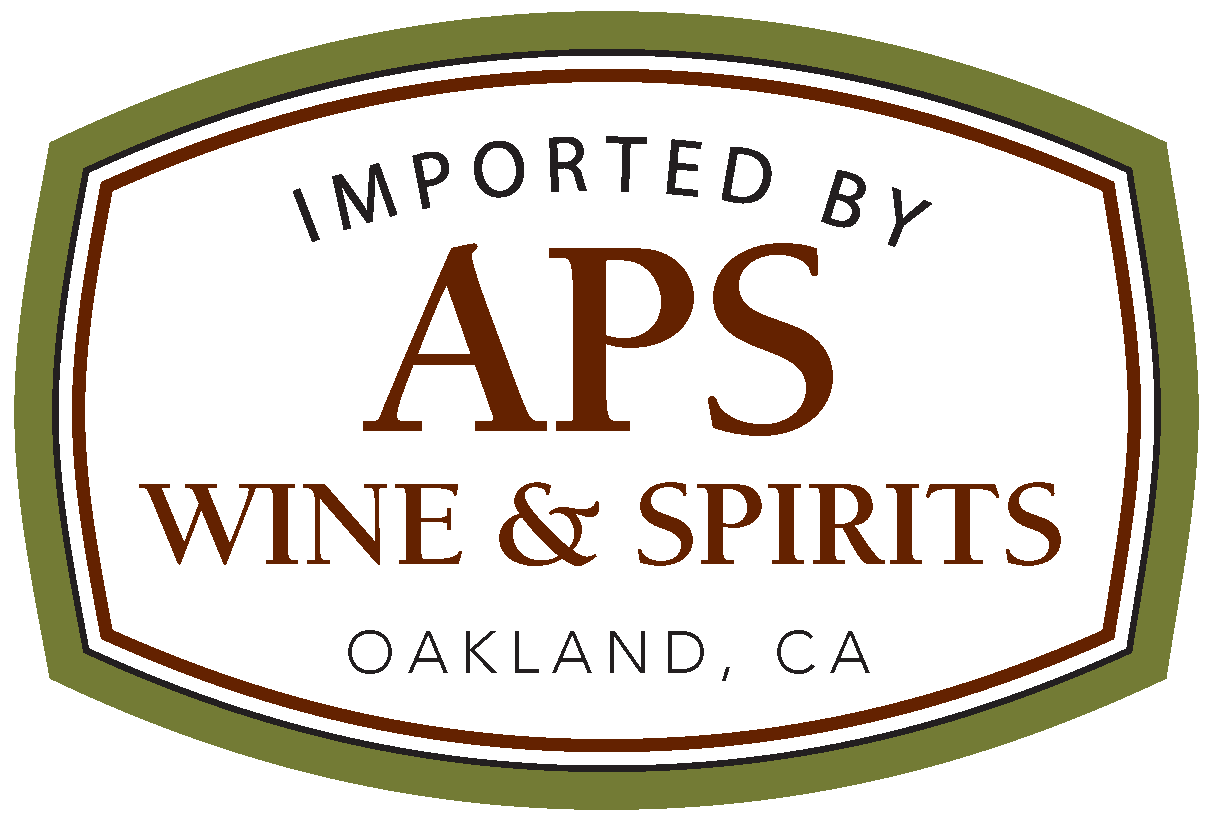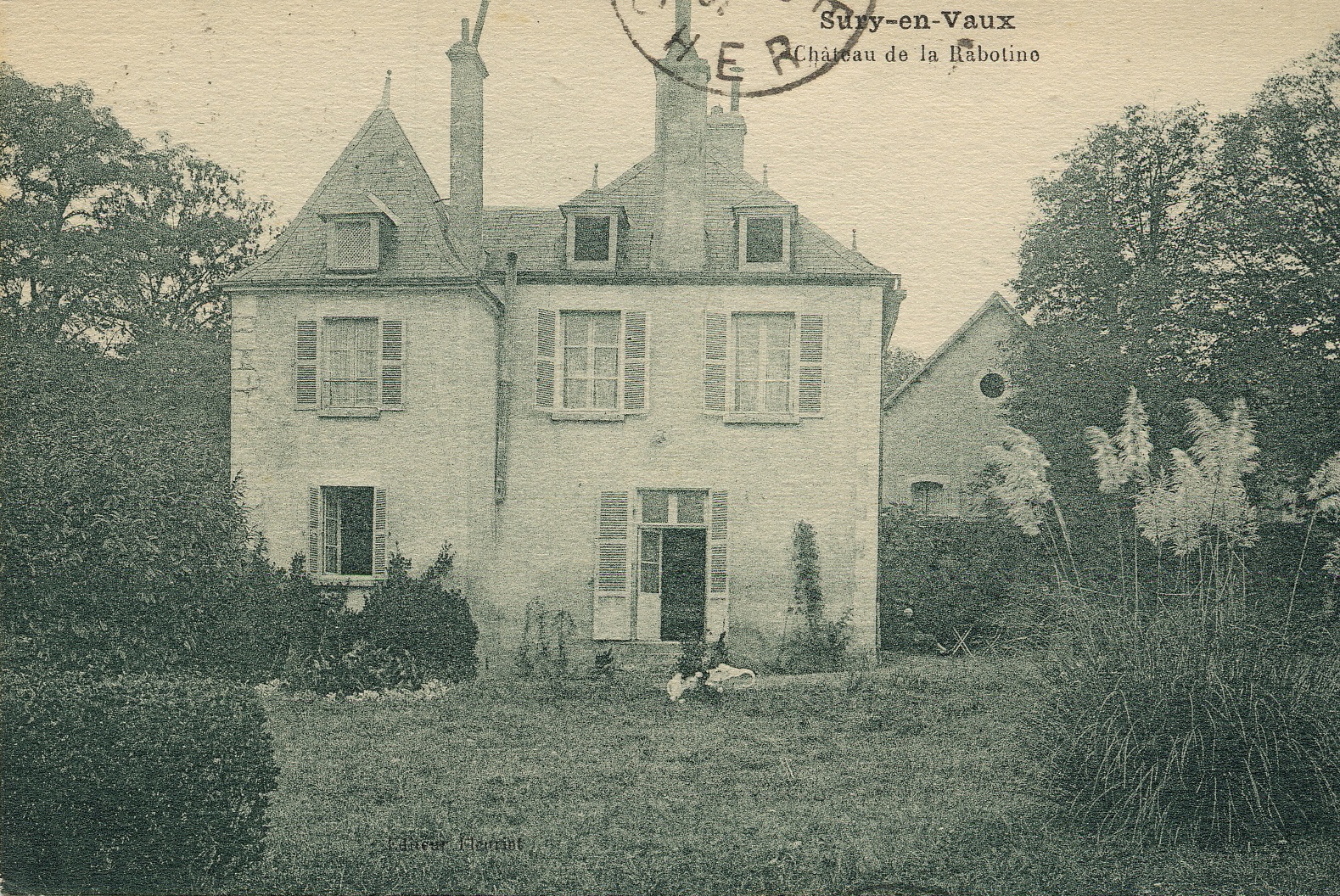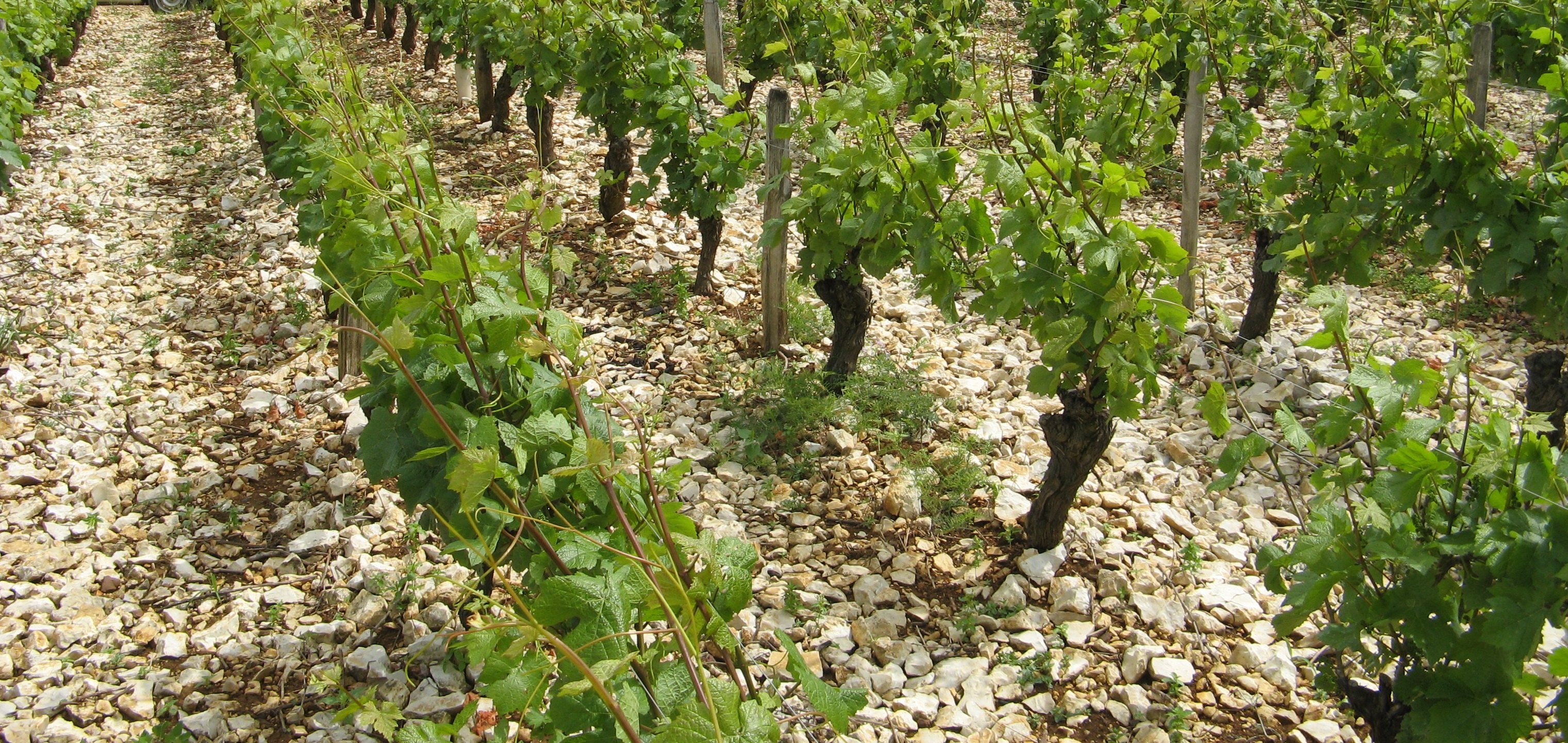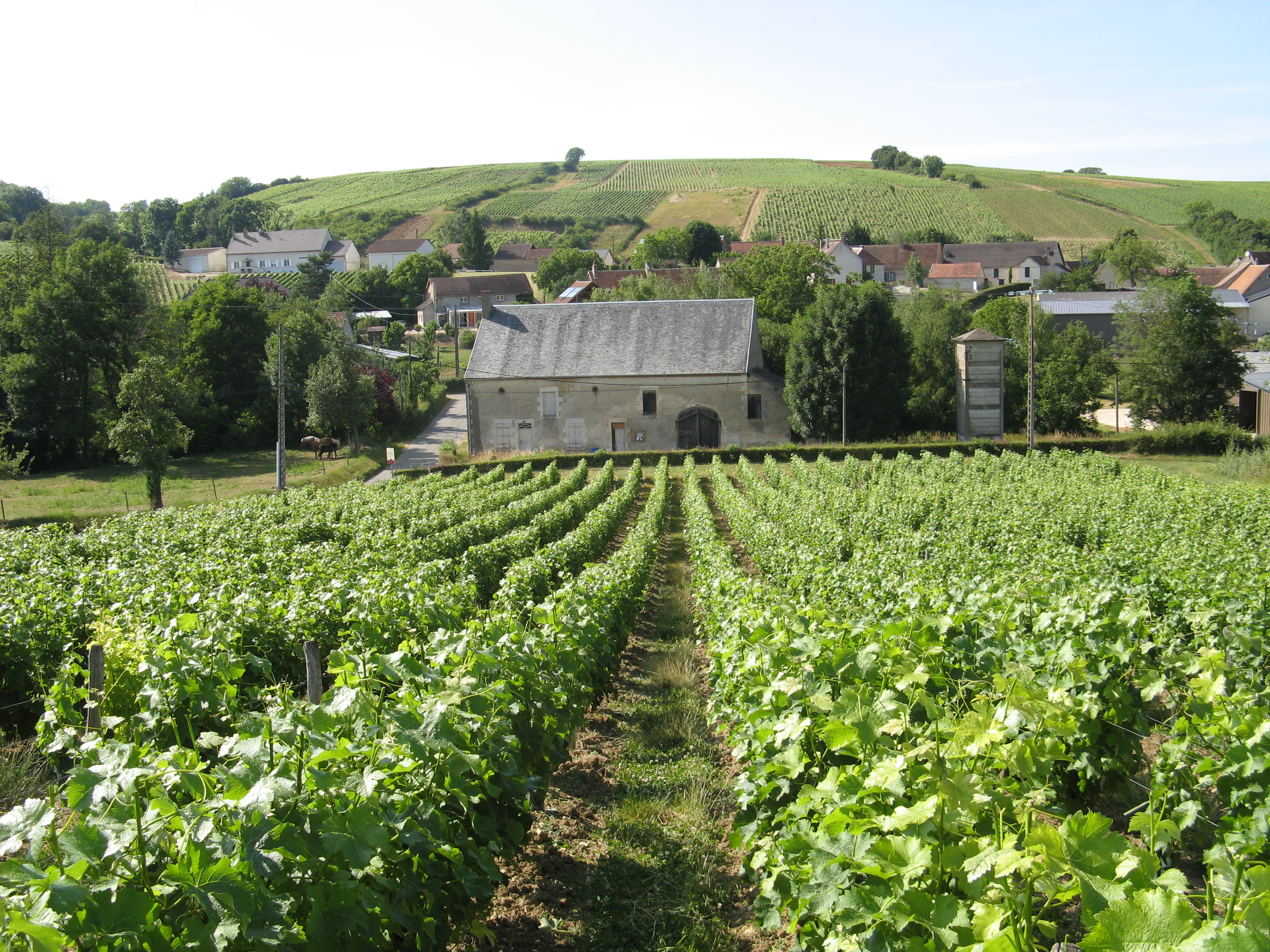ROBLIN MEETS RABOTINE
IN SMILE OF VALLEY
Château la Rabotine is the property of Alban Roblin, the youngest grandson of Sancerre vigneron Georges Roblin and cousin of Matthias and Émile Roblin of Enclos de Maimbray. In his little isolated pocket in Sancerre’s northern limits, Alban reminds us that Loire Sauvignon Blanc can be quirky and just as cool as Chenin from the left or Chardonnay from the right.
Alban and his wife took control of Château La Rabotine and its vineyards in 2010. What seems like a new wine venture is actually a continuation of an old one; the Roblins have cultivated this land since the 1920s. Alban Roblin lives in Sury-en-Vaux, Smile of the Valley. Sounds like a gimmicky name for a cheese, right? Yet, this northerly region is home to several exceptional winemakers, like the cellars of Mr. Reverdy and Mr. Riffault; pretty nice company. As a winemaker of skill and finesse, Alban is no exception to this remarkable company.
The terrain of Rabotine is a blanket of rocks and stones, exposed gentle hillsides, and old-vines (well over 40 years). The region is singular due to its higher altitude (~280m) and the wind that funnels though the valley, acting like a hair dryer to the vines, deflecting problematic rot and disease. This unusual setting allows Alban to farm biodynamically without sacrificing the fitness of the fruit. For Alban, each vintage dictates how the wine will be made… Will there be more used barrel than steel for Pinot Noir? Will there be stems in the rosé? Will there be extra time on the lees for Sauvignon Blanc? For this reason, the wines of Alban and Château La Rabotine engage us every year and have us drinking Sancerre all over again.
Over the last decade there has been an explosion of single vineyard labels in places from Sancerre to Muscadet and Sonoma to Santa Barbara. While we appreciate these expressions of the carefully dotted lines of terroir, we must not forget the skill of blending. The wines of Alban Roblin are mostly skillful blends, a meditated checks and minuses of several lieux-dits. As a result, we have an understanding of what Sauvignon Blanc and Pinot Noir from Sury-en-Vaux taste like. Before we battle the greatest vineyards of Sancerre, maybe we should firstly examine why a wine from Chavignol tastes like a wine from Chavignol and why a wine from Sury-en-Vaux tastes like a wine from Sury-en-Vaux. Thanks to Alban Roblin and his Smile of the Valley neighbors, we begin the conversation.

Nature seldom gives you all you want as a farmer: too little, too much, sometimes way too much, it’s always something. Hard frost in 2021, high heat in 2020, the challenges in recent vintages have been real, and still Alban made delicious Sancerres. Well, in 2022 nature did cooperate, and Alban made perhaps his most attractive and savory Sancerre Blanc ever. We could not be happier to announce the arrival of his 2022 Sancerre Blanc made exclusively for APS Wine & Spirits. Folks who love Sancerre simply must drink this wine.
Alban sources the Sauvignon Blanc for his APS Cuvée Sancerre from four lieux-dits vineyards called Les Perrieres, Le Canard, La Rabotine and Côte de Valliens. Year in and year out, the finest Sancerres come from vineyards composed of two different kinds of soil: Terres Blanches (Kimmeridgian limestone clay) or Caillotes (Portlandian limestone). Alban’s four vineyards are evenly split between the two. Add to that, excellent hillside drainage and ideal sun exposure, and you have the makings of benchmark Sancerre. Perhaps Alban’s own words help situate his vineyards even better:
“The care and attention that we bestow on our vines are based on the idea of minimal intervention, and on the continual observation of each parcel throughout the year. Out of respect for nature and the environment, our parcels are grassed over. We work our soils to ensure they maintain a healthy biological life, that is essential when growing high quality fruit.”
Maybe it should go without saying, but Alban’s whole estate is in the process of conversion to complete organic practices with just one year to go.
As in years past, Alban allowed his Sauvignon Blanc fermention in 2022 to begin with the native yeast that came in on the fruit from the vineyards. Sorting was easy this year because all the fruit that came in was so healthy and just perfectly ripe. Cold settling of the juice and vinification in temperature-controlled stainless steel tank was followed by five months refinement on the fine lees with occasional stirring, “en remuant” as the vignerons say. The last bit of the fermenation was a partial malo-lactic in the spring, just to lend a bit of softness to the wine. From there, it was bottling in April followed by a month of rest before finding its way into a refrigerated container for it’s timely arrival for us to enjoy at its peak!
One more time, Alban has the right words for his wine:
“A pale yellow brilliant color with a nice brightness. The nose reveals aromas of white flowers, boxwood and citrus fruits. The palate shows a dynamic presence with a fine expression of pit fruits and overtones of a very elegant minerality. An expressive, well-balanced wine.”
We all agree. Bravo, Alban! You nailed it!
Maybe the only reason there is so little Sancerre Rouge is that Sancerre Blanc rules the world. LOL! Seriously, all of the pieces of the puzzle to make truly fine Pinot Noir exist in Sancerre: cool climate for long, slow ripening; rocky, limestone-clay soils for that essential mineral-laden, cherry-berry fruit character in the glass; and hillside vineyards because that’s just the best way to grow grapes. Well, the fact remains, there is precious little Sancerre Rouge to go around. At Château La Rabotine that’s just six acres of their 30 total.
Two vineyards contribute to Alban’s 2020 Sancerre Rouge “Cuvée des Dames”: 60+ year vines in L’Erable and Droux. L’Erable usually makes up the single source for his Rouge, but this year he added a small percentage of the Droux just like he did with his celebrated 2018. In fact, Alban approached both vintages in much the same way. Strict pruning, green fruit and leaf thinning, and timely early picking brought in just about perfect fruit. On arrival at the cellar, the fruit was fully destemmed and closely sorted, then macerated in stainless steel tank for three weeks with manual punching of the cap and pumping over. After maceration and alcoholic fermentation, the wine was racked off into a combination of tank and neutral oak barrels where a natural malolactic fermentaion finished the wine in early spring of 2021. From there, Alban let the wine rest for twelve months, bottling in April of 2022. Speaking with Alban, he says the wine has a “clear and limpid red cherry color. The nose is rich and complex with aromas of red fruits, dominated by black currants and a beguiling spice. It is long on the palate where it’s velvety grip, fresh acidity and raspberry/plum fruit character are most apparent.” Anyone who liked Alban’s 2018 will appreciate his 2020 just as much. Only problem is less than 100 cases are destined for the U.S. Come and get it.
100% Pinot Noir sourced from the monopole “L’Erable.” The fruit is hand picked for us, completely destemmed and bladder pressed. The juice then flows by gravity to a single steel tank, newly acquired for the U.S. An amazing blanket that wraps the tank enables temperature control of fermentation. The wine is bottled with only a light fining and no filtration. This is real Sancerre Rosé. No saignée, no slight of hand, no “Frankenwine” methods. Fresh and alive with fruits of Damson plum and whispers of huckleberry. Dry and 100% natural acidity. Zero additives. Length, body, finesse and balance. Bottled March, 2023.




